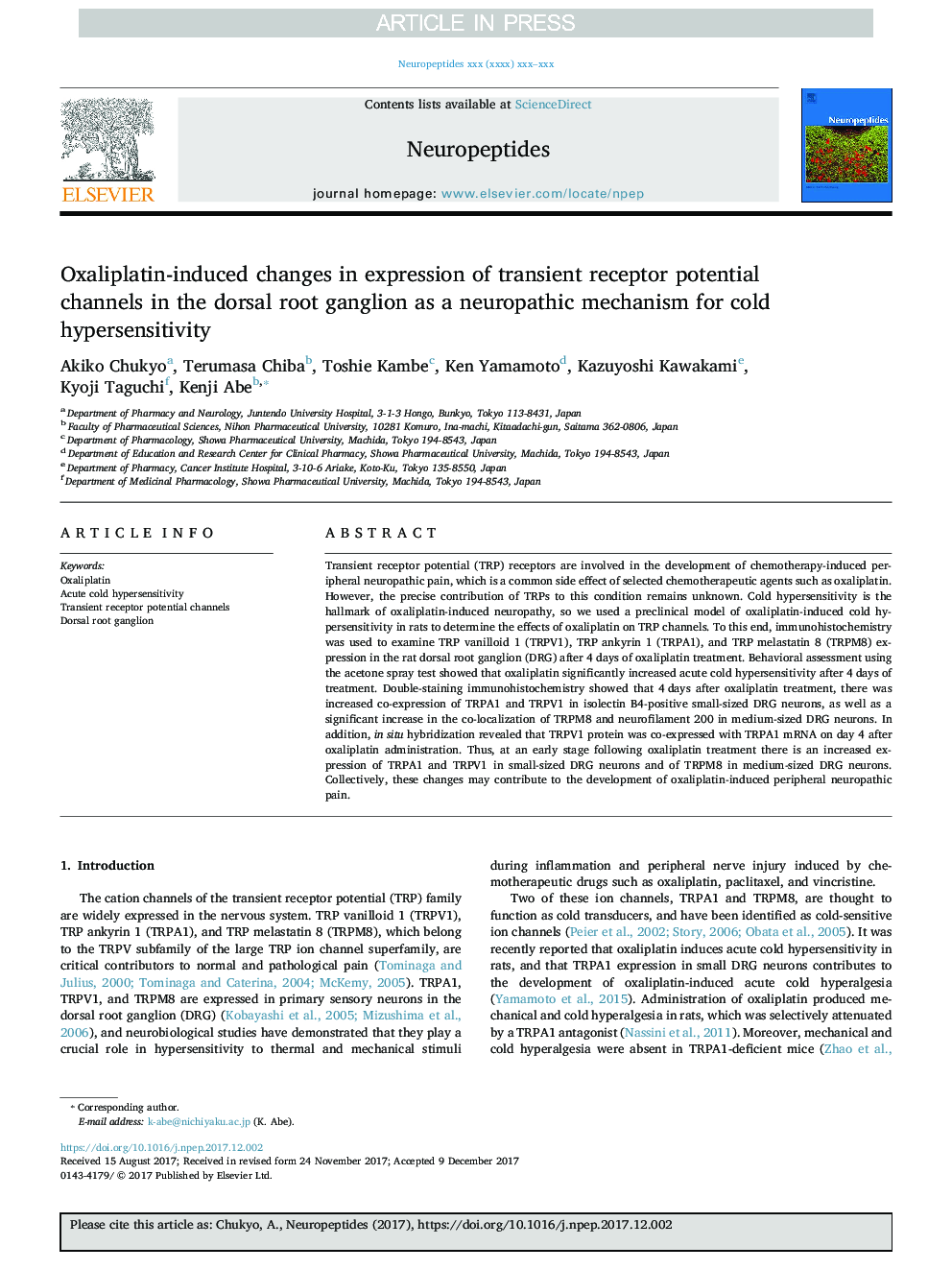| Article ID | Journal | Published Year | Pages | File Type |
|---|---|---|---|---|
| 8633353 | Neuropeptides | 2018 | 7 Pages |
Abstract
Transient receptor potential (TRP) receptors are involved in the development of chemotherapy-induced peripheral neuropathic pain, which is a common side effect of selected chemotherapeutic agents such as oxaliplatin. However, the precise contribution of TRPs to this condition remains unknown. Cold hypersensitivity is the hallmark of oxaliplatin-induced neuropathy, so we used a preclinical model of oxaliplatin-induced cold hypersensitivity in rats to determine the effects of oxaliplatin on TRP channels. To this end, immunohistochemistry was used to examine TRP vanilloid 1 (TRPV1), TRP ankyrin 1 (TRPA1), and TRP melastatin 8 (TRPM8) expression in the rat dorsal root ganglion (DRG) after 4Â days of oxaliplatin treatment. Behavioral assessment using the acetone spray test showed that oxaliplatin significantly increased acute cold hypersensitivity after 4Â days of treatment. Double-staining immunohistochemistry showed that 4Â days after oxaliplatin treatment, there was increased co-expression of TRPA1 and TRPV1 in isolectin B4-positive small-sized DRG neurons, as well as a significant increase in the co-localization of TRPM8 and neurofilament 200 in medium-sized DRG neurons. In addition, in situ hybridization revealed that TRPV1 protein was co-expressed with TRPA1 mRNA on day 4 after oxaliplatin administration. Thus, at an early stage following oxaliplatin treatment there is an increased expression of TRPA1 and TRPV1 in small-sized DRG neurons and of TRPM8 in medium-sized DRG neurons. Collectively, these changes may contribute to the development of oxaliplatin-induced peripheral neuropathic pain.
Related Topics
Life Sciences
Biochemistry, Genetics and Molecular Biology
Endocrinology
Authors
Akiko Chukyo, Terumasa Chiba, Toshie Kambe, Ken Yamamoto, Kazuyoshi Kawakami, Kyoji Taguchi, Kenji Abe,
